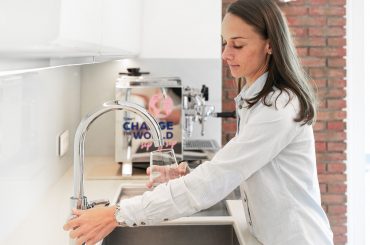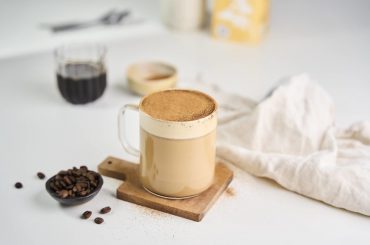Time and again, an underextracted coffee is served at a speciality coffee shop. A bag from a well-known roastery, the EK43 on the bar counter and a barista making a pledge: the sweetness of wild strawberries and a cocoa aftertaste. And in the cup: emptiness and an aroma hard to define. A boring, generic, slightly sour flavour devoid of life. Speciality coffee is in many ways a complex product; it is, in fact, complicated almost to the point of absurdity. One mistake at any stage of the journey can make you bid farewell to all those fancy sensory notes from Instagram.
But! As a person brewing coffee you are to a large extent in a favourable situation, because in theory the most difficult things had been accomplished before you first laid your hands on the coffee bag. Really, really. The hearts of coffee priests have just trembled but it is so – if your high-quality beans have been treated skilfully all along the farmer-grinder line, preparing them so as to make them taste sweet and simply good can be compared to kicking the ball into an empty goal from a distance of 11 meters. Well-roasted, high quality coffee extracts quickly and without any whims. So the first stop on our journey to high extractions will be…
1. Choosing the beans!
Before you ask on the Forum “dripper or AeroPress?”, it is good to focus on coffee itself. Seemingly obvious, in reality not so much. The essential skill of each coffee professional is knowing how to cup coffee correctly. And preferably according to the SCA standards. Cupping allows you to keep human intervention to a minimum, letting you focus on the product, for which you will charge people money or at least expect a sudden surge of excitement. In this context, it will answer the question: have you got a product fulfilling your expectations? Is this coffee simply GOOD?
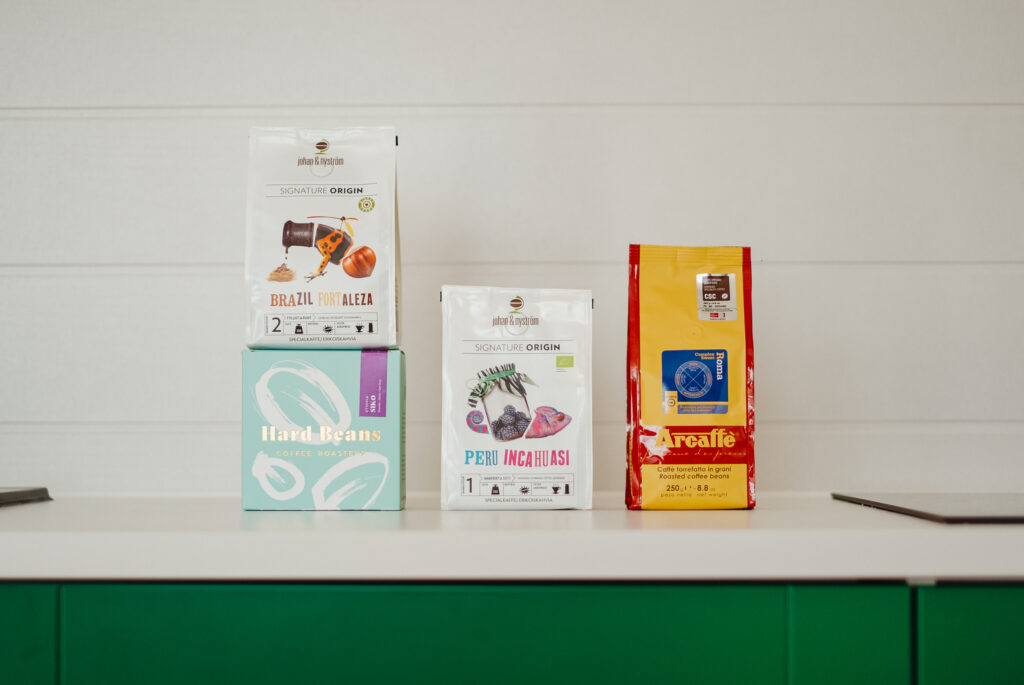
If during a correctly prepared cupping, there is no sweetness in coffee, you cannot find the characteristics such as a nice body, balance or long, sweet aftertaste, you have trouble specifying its aroma – don’t expect that a long kiss from the Chemex will break the spell. Most likely, this coffee won’t give you juicy extractions.
Sure thing, check three times before the final verdict. Has the procedure been followed correctly? Sometimes, the beans can be defective – have you analysed more than one cup? Do others feel the same? Did you test different beans at around the same time, which has given you a good point of reference?
Choose only sweet, lively, expressive coffees – by this trivial, but well-thought-out and careful course of action, you will reduce your extraction problems in a drastic way.
2. Equipment
A poor grind can make a good coffee medium or bad, an average coffee – bad or undrinkable and a wonderful coffee only satisfactory. The better the grind, the more the coffee will show what it already has.
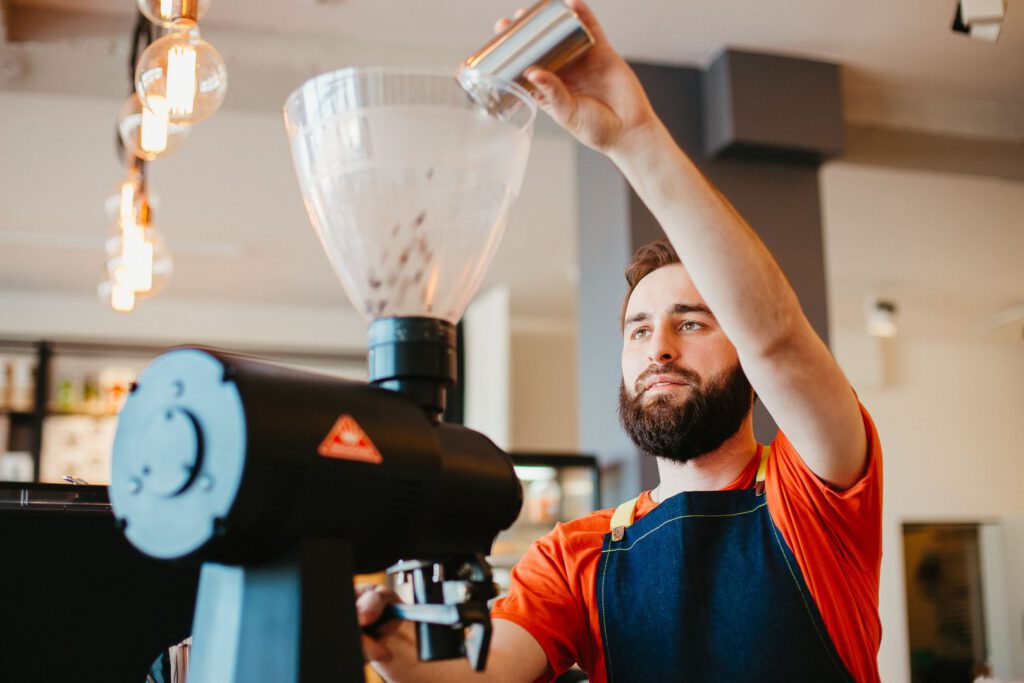
A finer grind improves the extraction by increasing the contact area between the beans and water. There is always a certain particle size distribution, regardless of grinder or chosen grind, meaning that some particles will be smaller and some larger than the dominant. The less even and more ‘stretched’ the grind is, the more different-sized particles there are and the less definite the middle value is. Within five minutes, larger coffee particles ‘give back’ less soluble substances than smaller ones that are easily penetrated by hot water. The brew which you evaluate is nothing but a sum of millions of microextractions of single particles.
Every extraction is uneven. The least uneven ones taste good.
The following test will easily demonstrate that:
Cupping, a twelve gram dose. Four grams fine grind, four grams medium grind and four grams coarse grind. Mix all and do everything according to the procedure. You will get an extremely uneven extraction – try to remember its characteristics.
The poorer the grind quality, the more characteristics from the experience described above the flavour of your brew will have.
Okay, now, if you want to enjoy high and even extractions, you should have a good grinder. Did I already mention the often absurd complications of the world of coffee? Besides, you need to make sure that the burrs of your grinder are horizontally and vertically aligned (I am talking here about the flat burrs, the famous Comandante Grinder equipped with solid conical burrs doesn’t seem to have this problem). You can calibrate your grinder by using specific devices, such as this, or clever tricks, as presented here. You should also pester the dealer of your equipment – it should be up to them to ensure that these expensive toys are in top form when they reach you.

Even if your burrs have been ideally aligned at the factory, you won’t avoid the subject of calibration and aligning the burrs while replacing them. After grinding some coffee (the amount stated by the manufacturer), the time comes to install new burrs. The blunter the burrs, the less even the grind, and the less even the grind, the… right, this should be clear by now!
Water too is an integral part of the equipment. This is, by the way, a subject that could fill many books. To be brutally brief – water inappropriate for coffee will rule out nice extractions. For the sake of this text, let’s assume that your water fulfils the SCA standards.
You can read more about water for coffee in our articles:
Water: the main ingredient of coffee, part 1
Water: the main ingredient of coffee, part 2: filtration
The last thing, not any less important at this stage, is simply the equipment in which you brew coffee. Let’s say this again: The evenness of the extraction is no less important than its level. So whether we are talking about an espresso machine or a pour-over coffee maker – invest in a good machine! A machine that does the following: distributes water evenly on the entire available surface, keeps a stable temperature and is made from solid, ideally certified materials. Furthermore, in the context of espresso, a standard which is nowadays difficult to question are accurate filter baskets or shower screens manufactured by the companies such as VST or IMS.

If, on the other hand, you opt for manual pour-over brewing methods, choose gadgets whose construction and operating principle are simple and facilitate even extractions; gadgets that make it easier to wet all coffee particles in the shortest possible time, keep all coffee grounds in constant contact with water, keep the temperature and allow you make the same recipe without difficulties.
You already have the best coffees and equipment chosen consciously – a solid foundation for high, even, juicy extractions! From now on, we presume that nothing will change in this matter – at least until the last full stop in the text.
3. Technics and a handful of rules.
We shall divide this part into two subparts: espresso and pour-over brewing.
Espresso
It is probably the most capricious and unique coffee brewing method. Many factors, water at high pressure and great sensitivity to the smallest changes. However, there are baristas who brew a better espresso than the majority of my friends from the industry.
Remember, the best tip about making a recipe for espresso, thanks to which you’ve taken the best shots in your life, is…
…the more even the extraction, the higher the extraction!
Boring, isn’t it? It will stop being so once you experience the difference. When it comes to espresso, it’s a big one. Let’s suppose that you already have the optimal grind and ratio for a given coffee.
To achieve a perfect espresso extraction, you simply need to be technically savvy. Reaching this target cannot be speeded up in any particular way: the skill comes with the number of shots brewed, as well as correct conclusions and wise observations.
The differences in the density of ground coffee within the basket, uneven tamp or accidental hitting of the portafilter on the counter or group rant – all this will result in a smaller volume of coffee in the basket meeting water. In extreme cases, this can lead to channelling, where a stream of water finds an extremely easy way out from the basket and jets from it. Most often directly onto your white shirt. Because you use naked portafilters, right?

Which is why higher and tastier extractions come down to:
- a perfect distribution of ground coffee from the grinder to the portafilter: evenly filled basket, similar density of coffee, no marked ups, downs or lumps
- flat, even, relatively strong tamp, ideally – perpendicular to the edge of the basket
- skilful and gentle using of the portafilter from the first seconds of grinding until locking it into the group head
- keeping your machine clean: regular cleaning of groups and shower heads, rinsing the portafilter in order to get rid of the coffee left from the previous brewing and drying it thoroughly before distributing.
For some time, baristas at many good coffee shops have used automatic distribution tools such as the OCD or automatic tampers from Puqpress. Such gadgets not only increase the likelihood of more even extractions, but they also help you make your coffees more repeatable.
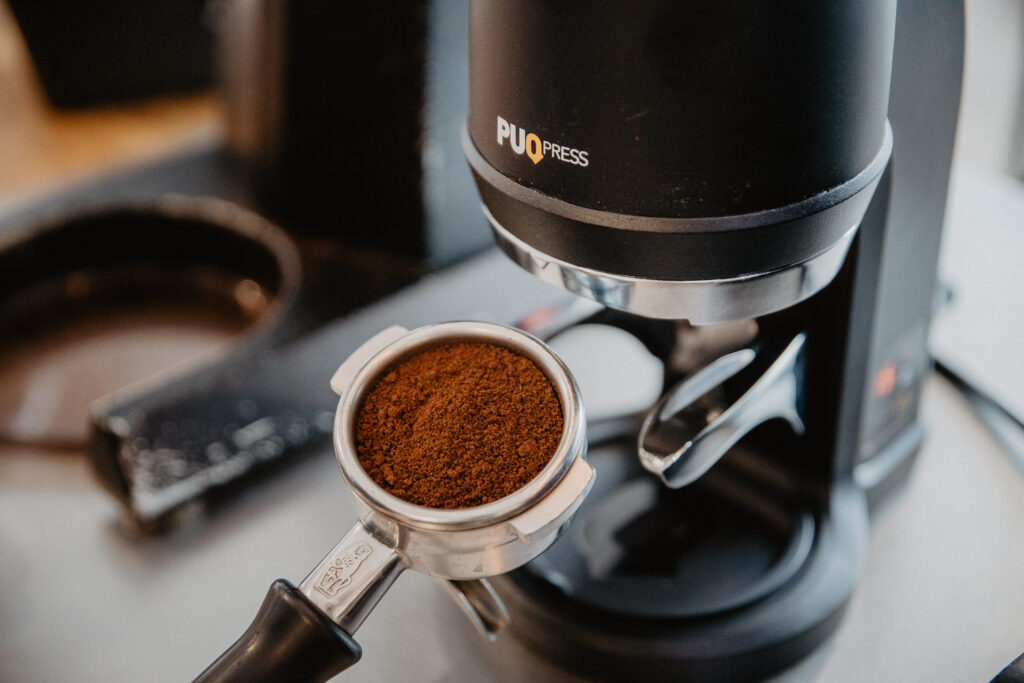
When it comes to the last item on the list, its importance is constantly downplayed by many baristas. Dirty equipment often results in an unpleasant bitterness and lower extractions in the cup. Let me pass over hygiene and aesthetics. In this case, you will need a completely different type of OCD. If you have a habit of keeping things in order and can see a square centimetre of dirt from a distance of three meters – you already are amongst a quarter of the best baristas in the world.
The following training can prove helpful in achieving the highest, most even extractions: (It would be great, if you had a refractometer. Then you could see your technique in numbers. If not, no worries, use just your tongue.)
- Create a recipe for a good, sweet espresso – block the dose, ratio and grind.
- Brew at least 8-10 espresso shots, strictly following the chosen recipe.
- Try out (and if you have a refractometer, measure) each espresso after brewing it. Take down your notes: Sweetness, acidity, balance, body and aftertaste.
- Compare your notes. Which coffees were the tastiest, the sweetest, which were more acidic, with a lower body, more aggressive in taste?
The sweetest and most balanced shots are, in this case, the most even ones, mainly due to your technique. Every barista can brew a sweet coffee by accident. Thanks to a good work culture, attention to detail and skills development, you will regularly achieve full-bodied, fleshy coffees. You have my word for it!
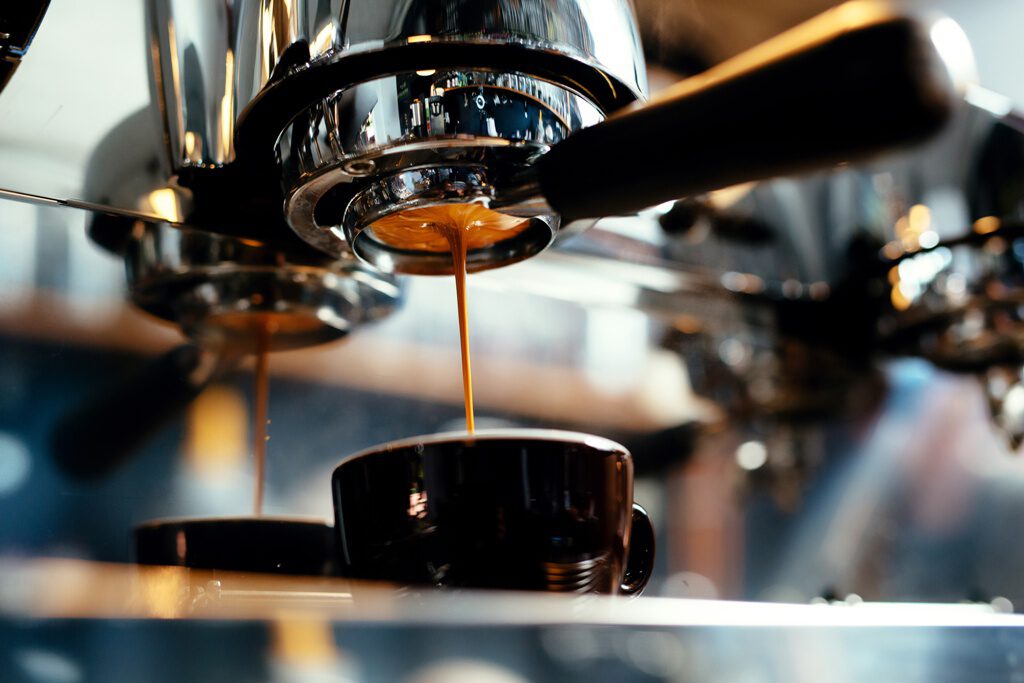
Pour-over brewing
The following tactics will work well for all pour-over coffees:
- Find the appropriate ratio (6-7 g/100 mL) and make a coffee.
- Try it. Is it bitter? If not, grind finer. Brew the next coffee
- Repeat the point above.
- If everything goes as it should, each time after brewing you will get a sweeter coffee, fuller in body.
Continue until you feel an unpleasant bitterness, dryness, or acidity in the brew. This is the moment when the grind has become too fine. If your brewing is technically good and even, the previous coffee probably represented the best possible extraction for its type.
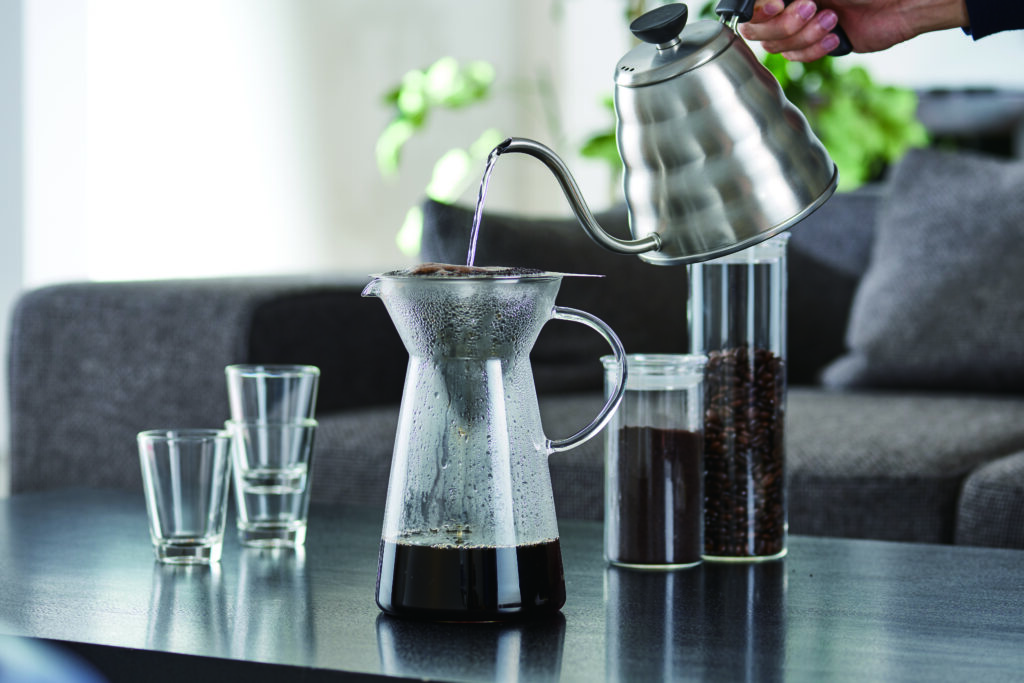
I believe in the approach: coffee > method. If you look at all what happens to coffee during its ‘bean in the ground -> packaging with a pretty image’ journey, the precision and complexity of which can be extraordinary, as well as at the influence of terroir, botanical variety, processing method and type of roast on the end product, the argument over a brewer type seems rather grotesque. Surely, some devices can bring out the individual characteristics of the brew more, but this is a purely subjective matter.
However, some brewers will help you achieve even extractions more easily and repeatably, and this is tip number one! Regardless of which device you use, you will enhance the quality of your brews by:
- Wetting all coffee grounds as soon as possible.
- Stirring preinfused coffee thoroughly to get rid of dry coffee grounds (channelling in a dripper happens too).
- Ensuring that all particles have constant contact with water.
- Agitating the device to wash the remaining particles off of its sides and even out the coffee bed (in the case of a dripper).
- Using water at high temperatures…
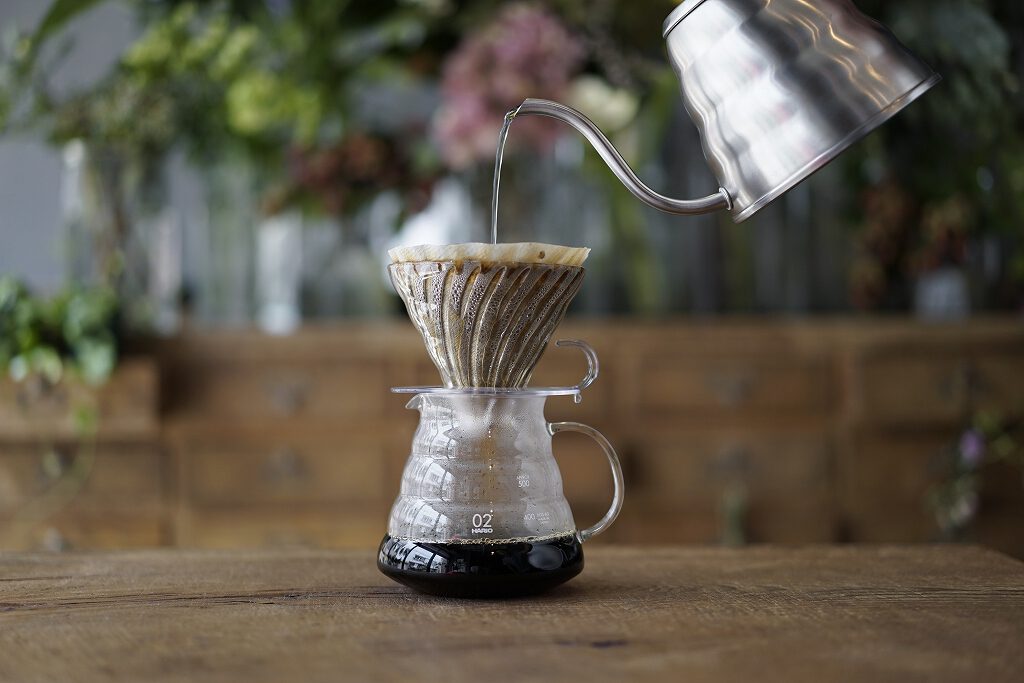
Temperature can be a hot topic on the Internet. But in reality there is no need for long discussions! I swear, I have never drunk a bad-tasting coffee made from high-quality beans, brewed evenly and technically well, at the initial temperature of 94-98 degrees Celsius. This is simply impossible. Skilfully roasted, high-quality beans offer a wonderful array of flavours that are most easily dissolved in high-energy water. If the last sentence from the equipment section is still valid, don’t be afraid to use water immediately after boiling. Set the optimal ratio, grind, and go! Check which manual brewing devices will help you reach high, but repeatable extractions. My favourite gadgets in this regard are the AeroPress and the Gabi. Two decent pieces of certified plastic. Ultra-simple to use. Always high extractions.
Pour-over coffee makers can be roughly divided into two categories: professional and home-use equipment. The course of action recommended for them won’t differ too much from the one described above. When it comes to machines used at coffee shops, such as the BUNN, you will only have to focus on the batch size, ratio, grind and temperature settings (remember – aim for 94-96 degrees). And then press the button.
On the other hand, when brewing in the Moccamaster, your intervention during preinfusion will be needed; you will also need to stir the coffee once or twice, especially after your coffee machine has spat out the last batch of water. Thanks to that, you will get an even, significantly higher extraction. Take my word for it. Those machines are extremely nice to use; however, they don’t pour water with the precision of the devices worth thousands of euro. And yet, I often drank wonderfully brewed coffees prepared in a small Netherlands coffee machine.
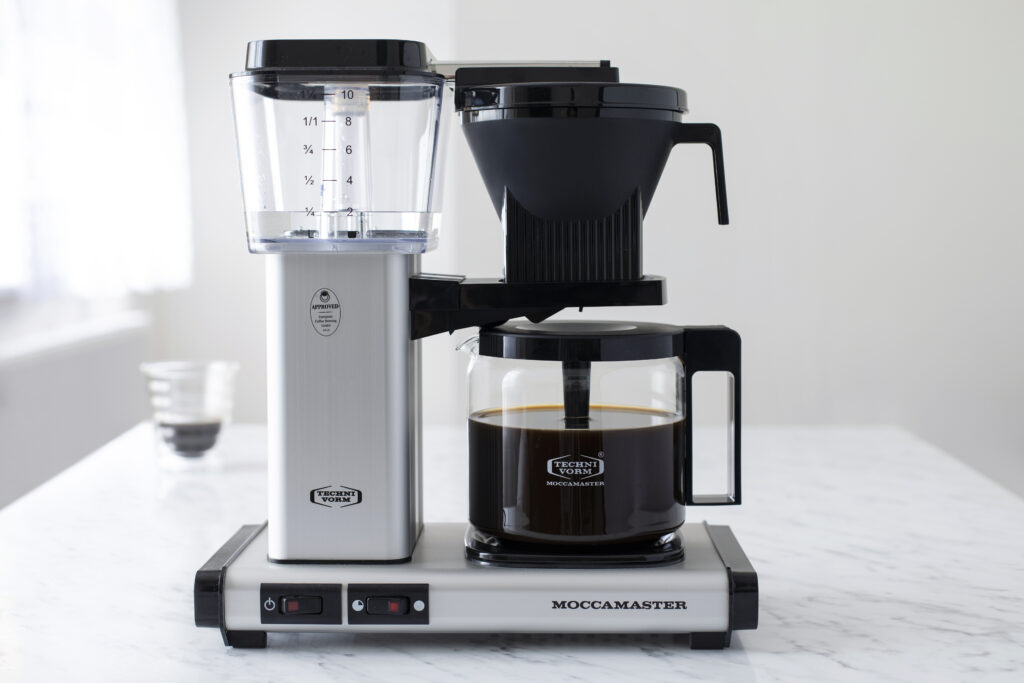
There are hundreds of factors influencing the flavour of coffee, and the best approach can be summed up in two words: simplicity and reason. Making drip coffee is not rocket science.
I wish you only high extractions!


